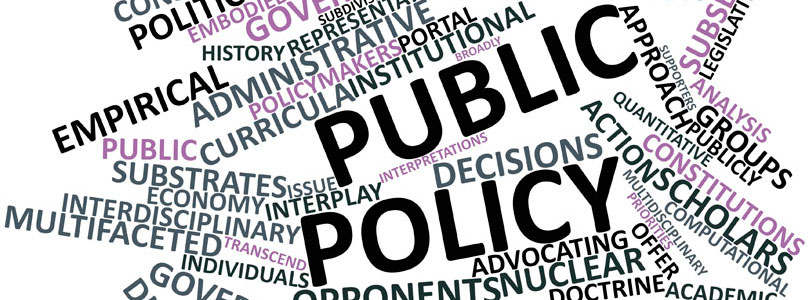Pernikahan Dini dan Marginalisasi Perempuan Nuaulu
DOI:
https://doi.org/10.51135/PublicPolicy.v3.i1.p72-90Keywords:
Early Marriage, Marginalization of Nuaulu WomanAbstract
This study was almet at learning the view of Nuaulu tribe toward the early marriage of women also to know how women of Nuaulu which is still and education can avoid the early marriage. The result showed that 2 major culture factors influenced the early marriage, are Nuaulu people tend to consider the women in the lowest position in the their tribe also people of nuaulu are not well educated. The influenced their way of the thinking and prompted the early marriage within their tribe.
Meanwhile, being kept marginalize by the situation such as when the girl is labled as dowry, it is consider that the girl can produce the money to help her parents by being married. Moreover, after the girl have their first period, they will Pinamoukan.
Therefore the solution to this early marriage is the women of Nuaulu must get an education to a high level.
Downloads
References
Aas Nurasiah Barokah dan Yessy Hermawati. (2019). Konsep Diri Perempuan Bali Melawan Patriarki dalam Novel Tempurung. Nusa, 14(2), 262–271. https://doi.org/https://doi.org/10.14710/nusa.14.2.262-272
Anis Maswoni. (2016). Stereotip Kesetaraan Gender Terhadap Budaya Pernikahan Dini pada Masyarakat Madura. Jurnal Pamator, 9(1), 15–18. Retrieved from https://journal.trunojoyo.ac.id/pamator/article/download/3364/2494
Arifin, M. H. (2017). Memahami Peran Pendidikan Tinggi Terhadap Mobilitas Sosial di Indonesia. 22(2), 139–158. https://doi.org/10.7454/mjs.v22i2.7697
Davis Kingsley dan Judith Blake. (1956). Social Structure and Fertility: An Analytic Framework. Economic Development and Cultural Change, 4(3), 211–235. Retrieved from https://www.jstor.org/stable/1151774
Febrianti. (2021). Pernikahan Dini dan Kekerasan Dalam Rumah Tangga (Studi Kasus Lombok Timur NTB) (Ndari Pengesti, ed.). Retrieved from https://en.id1lib.org/dl/18252437/b5589a
Ghufran, M., Kordi, H., Lusia, K., Muhammad, P., & Ramli, T. (2020). Perempuan, Masyarakat Patriarki & Kesetaraan Gender. In Cetakan Pertama (Ed.), BaKTI: Bursa Pengetahuan Kawasan Timur Indonesia. Retrieved from www.batukarinfo.com
Hermawati, W. (2018). Gender Dalam Ilmu Pengetahuan Dan Teknologi: Perkembangan, Kebijakan, & Tantangannya Di Indonesia (Cetakan Pe). Retrieved from http://penerbit.lipi.go.id/data/naskah1521570363.pdf
Jane C. Ollenburger dan Helen A. Moore. (2002). A Sociology of Women (Cetakan ke). Retrieved from https://library.unismuh.ac.id/opac/detail-opac?id=6680
Jeffriansyah Dwi Sahputra Amory. (2019). Peranan Gender Perempuan Dalam Pembangunan di Sulawesi Barat Tahun 2016-2018. Jurnal Ilmiah Ekonomi Pembangunan, 1(1), 1–15. Retrieved from https://stiemmamuju.e-journal.id/GJIEP/article/view/8
Kirk Dudley. (1976). Factors Affecting Moeslim Natality dalam Family Planning and Population Program. Chicago: Chicago University of Chicago Press.
Maleong, L. J. (2005). Metodologi Penelitian Kualitatif. Bandung: PT. Remaja Rosda Jaya.
More L. Hendrietta. (1998). Feminisme dan Antropolog. Retrieved from http://laser.umm.ac.id/catalog-detail-copy/140004646/
Narwoko dan Suyanto. (2014). Sosiologi Teks Pengantar dan Terapan (Cetakan 8). Retrieved from https://library.unismuh.ac.id/opac/detail-opac?id=8707
Nina Johan. (2012). Perempuan Nuaulu Tradisionalisme dan Kultur Patriarki (Ed.1, Cet.). Retrieved from http://library.fis.uny.ac.id/opac/index.php?p=show_detail&id=1826
Sastrawati, N. (2018). Laki-Laki dan Perempuan Identitas yang Berbeda, Analisis Gender dan Politik Perspektif Post feminisme. In Paper Knowledge . Toward a Media History of Documents (Cetakan Pertama). Retrieved from https://www.google.com/url?sa=t&rct=j&q=&esrc=s&source=web&cd=&cad=rja&uact=8&ved=2ahUKEwis8cb-qLr3AhXCR2wGHX0RCR8QFnoECAkQAQ&url=http%3A%2F%2Frepositori.uin-alauddin.ac.id%2F12634%2F&usg=AOvVaw1ycKYQpaIf-1JGGKcCdoMp

Downloads
Published
How to Cite
Issue
Section
License
Authors whose manuscripts are published in the Journal of Public Policy must agree to the following terms;
- Publication rights for all manuscript materials published are held by the editorial board with the author's consent.
- The legal formalities for digital access to the Journal of Public Policy are subject to the Creative Commons Attribution Sharealike (CC BY SA) license, which means the Journal of Public Policy has the right to store, redistribute, reformat, manage in a database, maintain, and publish the manuscript without seeking permission from the author as long as the author's name is included as the copyright owner.
- Published manuscripts are open access for the purpose of disseminating research results. Besides this purpose, the editorial board is not responsible for copyright law violations.


.png)



